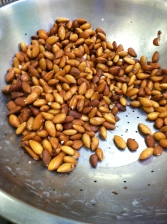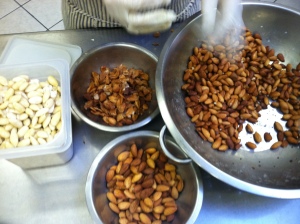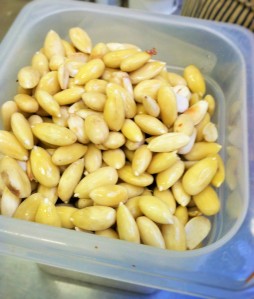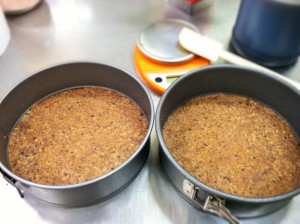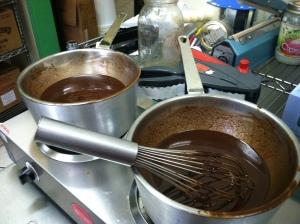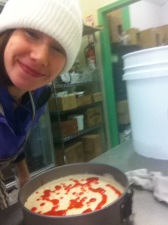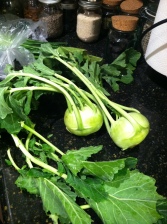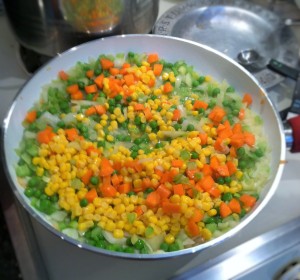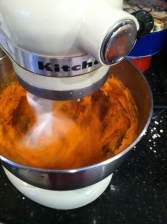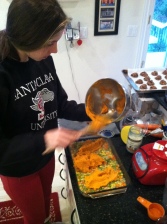Carried in by the brisk wind outside, I arrived at the café to a chorus of, “Tali, you’re here,” from the workers! I felt like part of the team as I grabbed an apron, washed my hands, and looked to Nicole for direction.
On my way over to where I saw her working, I observed one of the workers peeling almonds. After soaking the almonds overnight (better for our digestive systems), the worker slipped the almond crust off of the almond! It was so interesting to see the almonds skinless, almost like they were naked.
“What’s great about interns is that we can have a little fun,” she said with a devilish grin. “We’re going to make a cake!” She grabbed up the recipe book, flung it open, and started listing out ingredients for me to grab. Excitedly, I rushed around the kitchen finding things -soaked and sprouted cashews from the freezer, walnuts, coconut oil, freshly-squeezed lemon juice, pale pink Himalayan salt, agave nectar, date paste. It felt like a scavenger hunt since I knew where little of it was.
First, we made the crust, throwing date paste, almonds, walnuts, cacao nibs (which I had never seen before: they’re basically partially ground up cacao beans), agave, and coconut butter into a food processor. Then we weighed the crust mixture and divided it by two for two evenly weighted crust dishes. This is an important concept in cooking: weighing quantities to make sure that all the servings are equal.
After setting those in the freezer to harden, we defrosted and pureed strawberries and coconut oil for a sweet, delicious middle layer. Then we poured the strawberry puree on top of the crust and set them back in the freezer. Finally, we began to make the middle. We were making a sweet lemon, cashew filling -cashews, lemon, coconut oil, agave, and date paste. I was surprised to see how much sugar went into even “raw” and “healthy” desserts. The “sugar overload” is almost impossible to avoid! I blended al the ingredients together after measuring out and weighing each!
For the final touch, we drizzled the extra strawberry puree on top of the smooth and flattened filling, running a fork through the drizzle to create a beautiful creation on the top of the cake! For something that always seemed so hard, it was actually quite simple. Then we set the two cakes into the freezer for a final drying time. Unfortunately, I never got to taste it. Although, I am quite sure it would’ve tasted amazing!!!
Internship: 1.5 hour, Write-Up: .5 hour
Cost: NA, Materials: RAW’s food and supplies
Total Time: 47 hours
